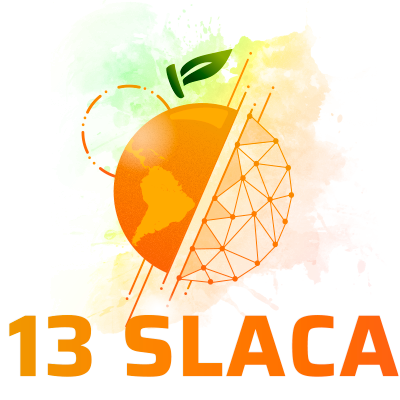Anais do Simpósio Latino Americano de Ciências de Alimentos
Anais do 13º Simpósio Latino Americano de Ciência de Alimentos
IN VITRO AND IN VIVO PRESCREEN TOXICITY OF NEWLY SYNTHESIZED NANOPARTICLES LOADED WITH A TRYPSIN INHIBITOR ISOLATED FROM TAMARIND SEEDS (Tamarindus indica L.): A NEW APPROACH TO POTENTIAL CLINICAL APPLICATION
Como citar esse trabalho?
Para citar este trabalho use um dos padrões abaixo:
Como citar esse trabalho?
The trypsin inhibitor isolated from tamarind (Tamarindus indica L.) (TTI) stands out among the satietyogenic and anti-inflammatory agents currently studied. From this perspective, alternatives such as encapsulation are sought to keep it intact along the gastrointestinal tract and potentiate its bioactive effect. Therefore, aiming at clinical applications, the objective of the study was to evaluate the subacute cytotoxicity and toxicity of the encapsulation administered in Wistar rats overfed with a high glycemic index diet. The nanoparticles (ECW) were synthesized using TTI, purified chitosan, and protein isolated from whey (1: 2: 2 w / w / w), characterized by Scanning Electron Microscopy, Fourier-transform infrared spectroscopy (FTIR) and efficiency of incorporation (%). ECW was evaluated for the interaction between TTI and encapsulating agents at neutral pH (water) and pH 3.0 using filtration in Amicon® 100 K and monitored by antitrypsin activity. The ECW cytotoxicity (0.5, 2.5 and 5 mg/mL) was evaluated by Resazurin assay (Caco-2 and CCD-18Co), as well as blood toxicity (hemogram, liver and renal function) in Wistar rats (n = 10) overfed with high glycemic index diet and administered with ECW (12.5 mg/kg) for 10 days. The particles presented spherical shape, smooth surface, the average diameter of 118 nm (17.30), and incorporation efficiency of 95% (0.31). Concerning to the water interaction of TTI and encapsulating agents, ECW kept the inhibitor confined in the system, evidencing the strong electrostatic interactions between the molecules. At acidic pH, the results suggest the destabilization of the interaction due to the increase of the antitrypsin activity, promoting the gradual release of the TTI. The absence of toxicity was demonstrated by cell viability> 70% and biochemical parameters of the rats within normal, with emphasis on the observed hepatic protection. ECW is safe and promising for clinical applications of TTI.
- 1 Departamento de Bioquímica / Universidade Federal do Rio Grande do Norte
- 2 Departamento de Nutrição / Universidade Federal do Rio Grande do Norte
- 3 Universidade do Vigo
- 4 Food Processing Group / Life Science Department / International Iberian Nanotechnology Laboratory
- 5. Engenharia de processos e tecnologias emergentes (ET)
Discussões Científicas de Qualidade
Com ~200 mil publicações revisadas por pesquisadores do mundo todo, o Galoá impulsiona cientistas na descoberta de pesquisas de ponta por meio de nossa plataforma indexada.
Confira nossos produtos e como podemos ajudá-lo a dar mais alcance para sua pesquisa:
Como citar esse proceedings?
Esse proceedings é identificado por um DOI , para usar em citações ou referências bibliográficas. Atenção: este não é um DOI para o jornal e, como tal, não pode ser usado em Lattes para identificar um trabalho específico.
Verifique o link "Como citar" na página do trabalho, para ver como citar corretamente o artigo

